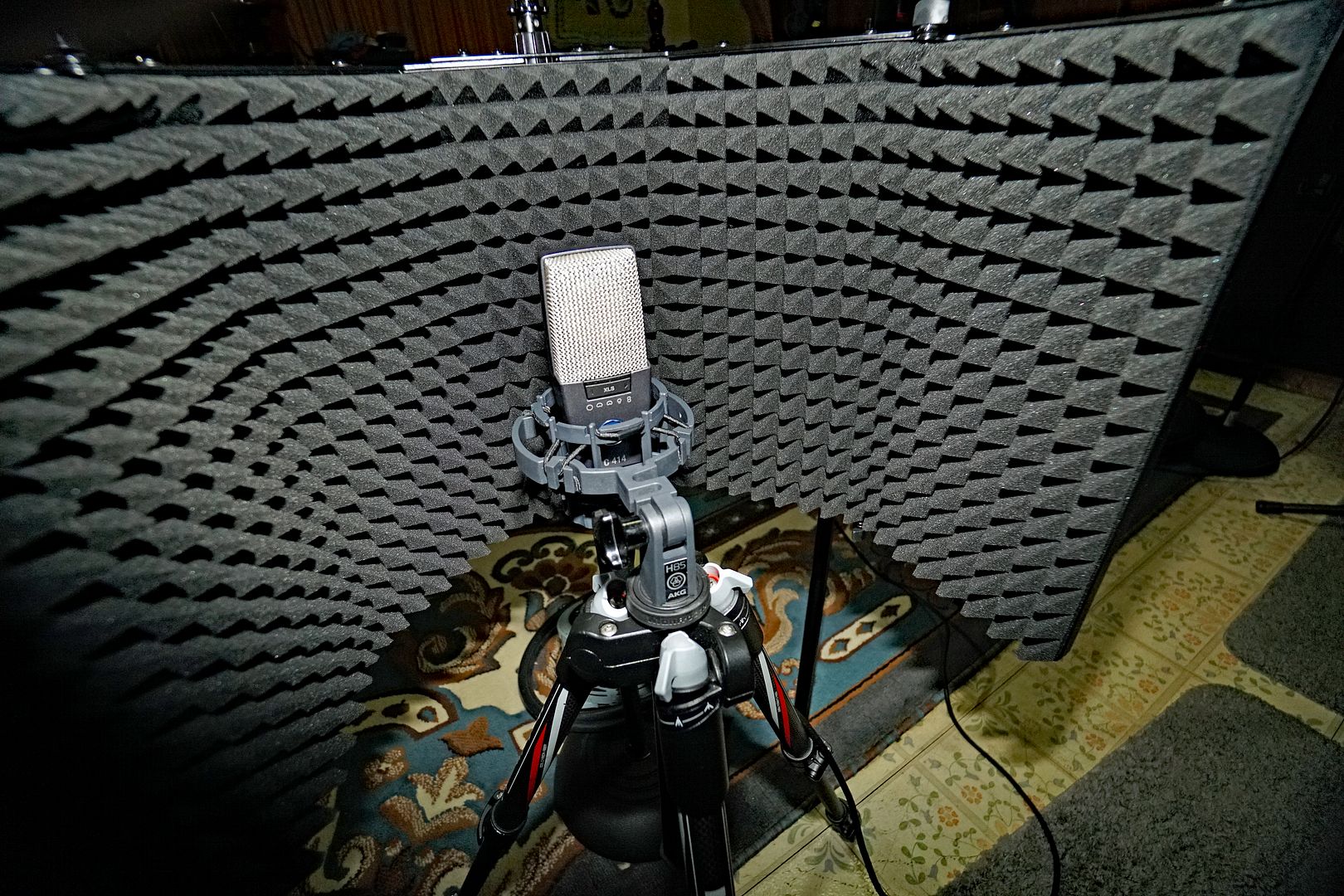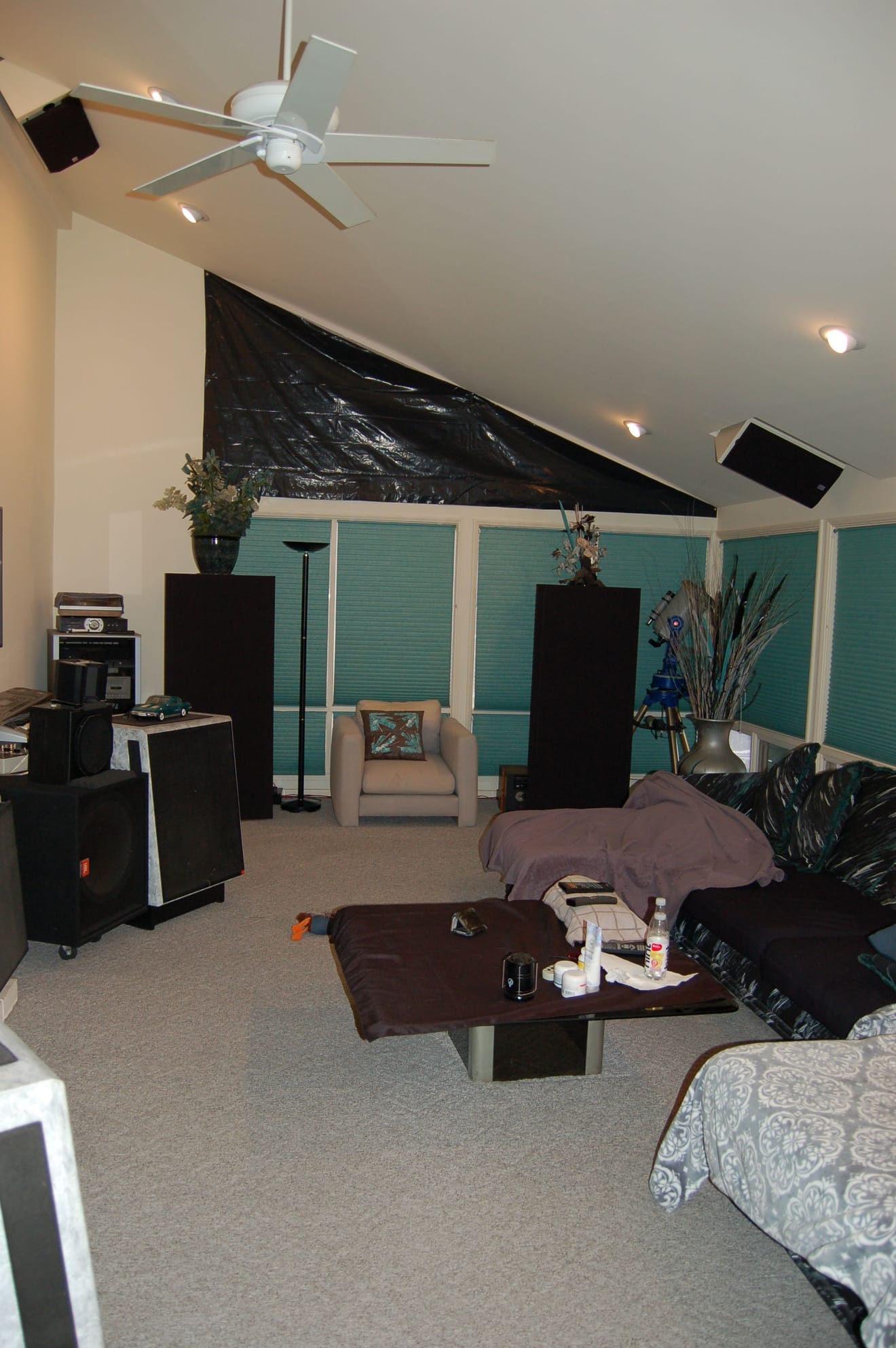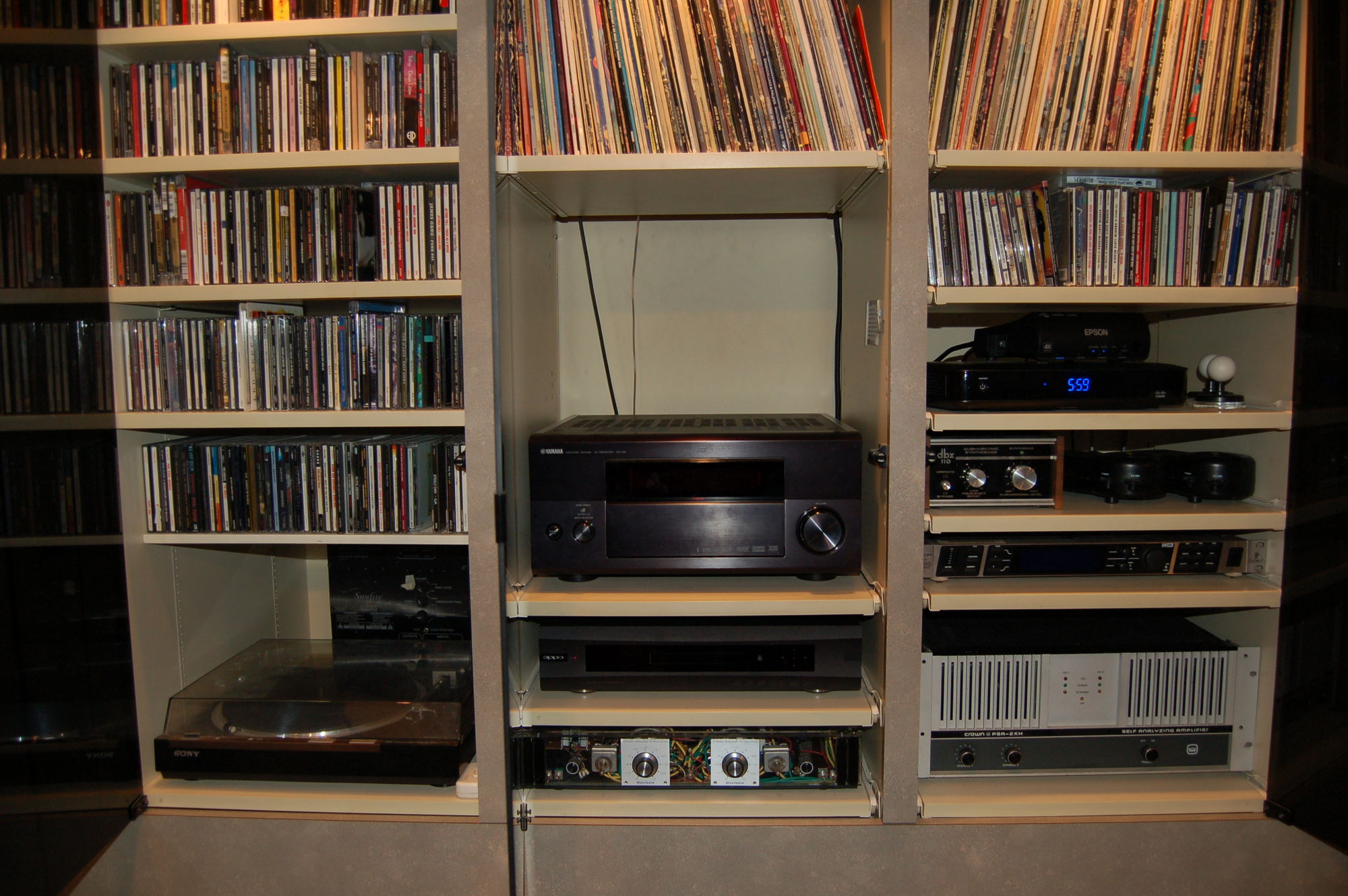"The only bragging rights would be for "how much was spent" which is at least objective, but does not say much else about the sound."
That would depend on your crowd. Those at AK typically take the opposite approach..., i.e., "how little was spent for the results obtained".
Unfortunately, it is impossible to accurately portray all aspects of the "results obtained" over the net and this requires attendance at the venue.
BUT, a good YouTube video can go a long way, and while you’ll never portray all the nuance, you will hear anomalies in the response and get a good idea of what the system is capable of, and you will know if it is garbage. Of course this assumes that you have a fairly neutral playback system on which to hear the videos or listen over good headphones and the video was well done.
|
@cleeds
That’s because you don’t know how to use it.
It will tell you if a system has a smooth frequency response in the room and if there are peaks and nodes (assuming a good recording).
Also, to do this, you need to go back and find the original direct transfer and that is what you are comparing the system too.
You are not listening to "what it sounds like" but rather "how close does it sound to the direct transfer" when listening on your quality monitoring system.
If you do comparisons in this manner, you will hear what the room sounds like as well as deviations in the system.
Sure, you loose imaging, soundstage, and the like, but you can tell trash from treasure.
|
If you think about it, if one were to use AI, they could do a digital rendition of a direct transfer and the recording and have the program "overlay" them looking at any differences in the bits. The fewer the differences, the higher the score?
|
Mihorn has shown my case.
Here is the direct transfer:
https://youtu.be/CoOp12ayIVg
And his wavetouch version:
https://youtu.be/lM-vtW-bygs
Load them in separate browsers and listen alternately back and forth at the same volume level.
Ignore soundstage/imaging/separation. These are not comparable unless close-up micing is used and even then the playback equipment may not support it for what it is in the room.
OK..., it doesn’t matter what you are listening on if it is decent.
Where did the bass go???
Where did the harmonics go?
Why does it now sound "boxed in" and not open?
The closer one gets to the direct transfer, the higher it scores.
|
high fi·del·i·ty
/ˌhī fəˈdelədē/

noun
noun: high fidelity; modifier noun: high-fidelity
-
the reproduction of sound with little distortion, giving a result very similar to the original.
High fidelity is my goal and it requires reproduction to produce an end result that is very similar to the original. The original is best demonstrated on a direct transfer and not a recording at someone’s venue.
One can say, "It is the room" or "I am only using 5-1/2" woofers so what do you expect?" but then they cannot consider this as high fidelity because it is unlike the original and therefore a distortion.
If you want true "high fidelity" you need the equipment and the room to back it up.
|
Mihorn, I don’t agree. I can hear the room. I can also hear a resonance in the room not on the original. But it is well treated compared to most.
https://youtu.be/lDJP95aZ9L8
As I noted, any variation from the direct cut is a distortion. But we can choose our distortions to suit our wallets and tastes.
I have a somewhat lively room (~5,000 cu ft) that is untreated, though the windows on two sides have blackout blinds, and when I listen, I choose to move the venue to the room rather than moving myself to the venue. I use no eq or room correction, either electronic or physical. When I do a video, the effects of the room become readily obvious when one listens to the direct cut. Sure it’s a distortion, but not so bothersome.
If I had this track, I would do a demo (dogs allowing of course). But I don't and I don't stream.
|
My computer is not connected to my stereo. It has it's own monitor system.
I suppose that I could download a track to a drive and plug that into the dongle of my Oppo, but I've not set it up to do this.
Pick something else that is out there, preferably in SACD and if I have it, we'll give it a go.
On another note, I know that you are somewhat local and are welcome to come over and hear first hand. I'm in the North Tustin area. Only that way will you experience the soundstage, imaging, and microdetail that are possible at realistic levels that envelop one.
My recordings always come out bright because I sit back into the sofa and the camera stands proud so we don't quite hear the same thing. And I use a Nikon D750 DSLR, because that's what I have and it does a decent job.
|
toddalin said:
When I listen to music, I don’t transport to the venue, but rather transport the venue to the room. A deader room would put me more at the venue.
When I do videos they tend to be brighter than what I hear on the couch because my head is typically back to the cushion and the mic stands "proud" away from the cushions. Even moving your head forward a few inches relative to the back of the couch causes major change to the frequency balance.
Mr Boochie said:
This recording business is a part of audio that I never put effort into before. It is a much different world from playback.
The mic’s position is critical. A few inches, up or down in relationship to the midrange/tweeter and woofers, can make a notable difference in the recording. You don’t hear it in real time, but it appears in the recording.
https://youtu.be/PVVwzcXtBNk
Recorded with mics on camera. They are too high = muddy mix, shifted to the high frequencies. Bass dynamics are hurt the most by poor mic placement and room acoustics. Mics were at 8-foot distance from the speakers. 54 inches off the ground.
___________________
https://youtu.be/PVVwzcXtBNk
Close mic’ing (mics at 18 inches from the front of the speakers and 22 inches in height).
In my experience, ensuring the mics are well supported and isolated from speaker vibrations helps clarity. They pick up extraneous vibrations that muddy or add artificial brightness.

BTW, Mr Boochie uses, and these are recordings of JBL L300 speakers.
|
No, you’ve not heard my videos because there are none, until now, of the current set-up. But whatever...
As I said, I bring the venue to the room. This is a regular CD on an Oppo-95. The speakers cost $1,500 to make and you are hearing a 23 year old Yamaha receiver with >35,000 hours on it.
No eq or room correction of any type and total investment <$6K. And we don’t need no subwoofers. Plus, I can crank rock music to insane levels undistorted! This recording was done on a Nikon D750 DSLR using it’s internal mics.
https://youtu.be/CoOp12ayIVg
https://youtu.be/yRsdYDuHjTI
https://youtu.be/u12ZxcTvD30
|
|
|
Thanks,
Consider the room and electronics and recognize, what are those high dollar systems really going to sound like? 
 


|
I don’t have it and I don’t stream to the audio system.
I am lucky that my computer monitor is a classic Advent system that does a really good job with nearfield monitoring.
And the reason I can tell that it does a good job is that when I listen to recordings of my system, it sounds true to what I hear in the other room except that on the computer in a recording I can much better hear the effects of the room. And of course you loose much of the soundstage and imaging.
|
The idea is to get the performers to come over to my place and do their thing. Luckily, the room is big enough to accommodate them.
Again, this is an Oppo-95 though a Yamaha RX-Z9 RECEIVER in "Pure Direct" and my Mermans with no eq or room correction, electronic or physical, and recorded on a Nikon D750 DSLR.
https://youtu.be/zSX0HLSauag
https://youtu.be/TykEDQDdtaE
|
This one is for Carlos269. You certainly hear a difference in the quality of the original recording where here you hear the "digital grain". (And I probably recorded it a bit "hot".) These are the problems of having a really revealing system. (I could/should have flipped the "Tube Simulation" switch to remove much of that. Vanessa was on an SACD.
https://youtu.be/RkBXXVcg-ZU

|
That's the purpose of the "Contour" control if so desired. The recordings were done in the "20 ohm" position.
|
Mihorn, I assume that you’ve seen the Oppo-95 with WaveTouch built in that has been on the local C/L? Not there now, but been there for a while off and on with a substantial price drop and probably will be back.
|
As I noted, the contour control adjusts the "forwardness" of the midrange. This is not a simple midrange volume control. As set (20 ohm "default"), I like the vocal detail it affords and when I listen to direct cuts, it sounds similar to me. I listen to disk after disk with no fatigue. Often I strive for a more vocal from my seat!
You need to realize that sitting on the couch puts my head back to the cushions and when recording, the mic stands forward of that. Even a couple inches can have a profound effect when you are dealing with this sort of thing and it is not quite so forward as it sounds in the track. I can also engage the "Tube Simulator" to take a bit of vocal "edge" out on bad recordings.
|
@isellgoodgear
@cleeds
If you make a recording, it should be true to the original direct transfer, regardless of what you are listening on. This is your point of reference and you are not comparing it to ANYTHING else. This is also what your recording should sound like.
So, it doesn’t really matter what you listen back on, as long as it is of good quality and "full range" so as to be able to capture the nuance of the original direct transfer. In fact, you really want to be using nearfield monitors.
|
|
Makes one wonder how many people refuse to post because they’ve spent mega bucks and are afraid that others will feel that they just don’t "measure up" or recognize that when held up to the direct transfer, they actually don’t???
|
|
@cleeds
But the direct transfer undergoes the same transformation, so the two should be equivalent.
No one is talking the ultimate in fidelity. I keep noting that there are qualities that cannot be conveyed (e.g., soundstage, imaging), but the general character and smoothness of the frequency balance, openness of the sound, etc. can be. We/I are/am only listening to hear if they sound the same and where the differences lie.
If the direct cut is rich in bass and the system is not, accounting for some floor bounce, we got a problem.
If the system shows a peak or resonance that is not in the direct transfer..., we got a problem.
If the system sounds muffled or devoid of harmonics (heavily veiled), and the direct transfer doesn’t..., we got a problem.
The list goes on.
As I said, nearfield monitoring is best for this exercise.
 Mihorn, ever seen one of these? It’s a Wavetouch modified Oppo-95. This one is available locally. Mihorn, ever seen one of these? It’s a Wavetouch modified Oppo-95. This one is available locally.
|
@mihorn @carlos269
I decided that in fact the upper midrange was a bit brash. Rather than being in the upper end of the 10", it was in my tuning of the Heil.
I have developed a method of tuning the Heil AMT quite unlike any other yielding a totally different response.
I use a "reflector" behind the diaphragm that sends the rear wave forward meeting the front wave. The result is that, using mechanical means, I can produce a fairly flat response from ~3,500 up past audibility. The response drops like a rock below this, even if there were no crossover. This is why the system sounds so detailed and open.
The distance of the reflector from the diaphragm controls how much signal is added from ~3,500Hz - >6KHz where the Heil would normally still be "coming in".
As the reflector is moved closer, you pick up more in this area, the slope below to the woofer is increased, and the peak in the 10KHz area is reduced. We are talking on the order of >3 dB and the differences are easily notable.
Anyway, is was simply a matter of moving the reflectors back a fraction of an inch to tame the upper midrange where it meets the woofer (~1.4 dB reduction) and consequently add a bit more in the 10kHz area. (Every compromise has a tradeoff.)
Competition always brings out the best, even if its with oneself based on forum comments. 
Wanna see what I'm talking about???
https://audiokarma.org/forums/index.php?threads/im-fixing-a-hole-heil.1025205/
|
Money??? We don't need no stinkin' money.
For a couple cents worth of filament, I can 3D print spacers to go between the Heil reflectors and the bodies that will create a greater difference in sound than $$$ cables.
As it is, I just push the reflectors in tight and if you try to pull them back out a hair (and I do mean a hair) you don't necessarily get the spacing consistent top to bottom and between the left and right speaker. This will take care of that.
And if I don't like what the spacing does, it's only a couple cents more to try it again at a bit different distance.
For me, this is what makes it a hobby as well as a source of relaxation.
|
1MM spacers. As I noted, takes out upper midrange and adds to the high end..., maybe a bit too much. As I said, everything is a compromise. I’ll probably try 0.6MM.
https://youtu.be/_kyQEa-QUd8
A nice thing about YouTube is that you can go back and compare other versions of what you’ve been working on as a point of reference.
I did this one last year, probably when I put the Mundorfs on the Heils. But other mods since (in the newer recording) seem to have helped with clarity and intonation a bit. There also seems to be a bit more "attack" on the piano.
I think that I got the 3D printer and did the Heil waveguides, changed to the Spragues on the 18s, and changed some values around just a bit, for the current recording. And of course, added the spacers. Sure one can do this on their own computer without YT, but where’s the fun in that?
Prior version:
https://youtu.be/axP5o643kfI
|
The problem with piano recordings is that many are too wide to be realistic. I don’t know of any pianos that are 8 feet and wider.
But it is good for checking intonation and clarity.
https://youtu.be/_kyQEa-QUd8
|
If there are no pics/sound..., it didn't happen:
This is the spectrum for the Heil without the reflector in place.

Here we add the reflector with the 1MM spacer. Knowing that the woofer has a very steep slope at ~3,500 Hz, what would you rather listen too?

Now we change out the 1MM spacers to 0.6MM. The problem with working with media this thin, you don't get a smooth edge. But, note how the frequency balance has shifted down just a hair. The real gains occur when you get <0.2MM, but this looks pretty darn good to me.

So, what kind of $$$ are we talking for such a shift, which is probably more than you would get from swapping cables? Maybe a couple cents.

 
|
OK, here’s a thought for all those people who complain about the YT quality due to their compression and what not.
Make a good video of your system and download it so that you can play it back as is.
Then send it off to YT.
Put both on your system and using near-field monitoring, listen back and forth and describe any differences you hear, and how bad is it..., really.
|
Some old friends dropped by to play. You really hear the "noise" of the digital transfer on this CD. I should have engaged the "tube simulator".
As always, this is on an Oppo-95 through a Yamaha RX-Z9 RECEIVER in "Pure Direct" mode and no eq or room correction, either electronic of physical is being used. No special wires are used and the speaker wire is 14 gauge "speaker wire." I did rewire the entire house/system to a 20 amp breaker with 8 gauge wire and no splices at all.
The room is ~5,000 cu ft.
https://youtu.be/GFTrqUAvVLw
https://youtu.be/v7em409KZWQ
|
Ron’s system sounds really nice. Nice and clear. Very articulate. The Voss system..., not so much.
|








 Mihorn, ever seen one of these? It’s a Wavetouch modified Oppo-95. This one is available locally.
Mihorn, ever seen one of these? It’s a Wavetouch modified Oppo-95. This one is available locally.




